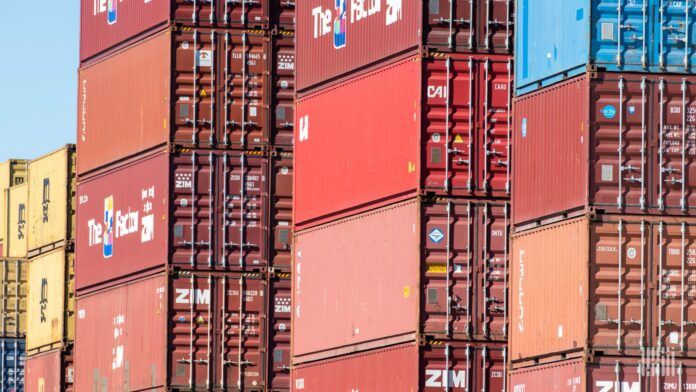Container flows through U.S. ports are anticipated to finish strong, with significant end-of-year gains indicating a promising outlook for 2024. The surge in traffic is driven by shippers stockpiling imports to navigate potential labor disputes and impending tariff threats in the upcoming year, as reported by the National Retail Federation.
In November, American ports handled 2.17 million twenty-foot equivalent units (TEUs), excluding the ports of New York and New Jersey, which have not yet reported their data. While volume decreased by 3.2% from October, it was up by 14.7% year over year (y/y). The NRF projects December volume to reach 2.24 million TEUs, marking a 19.2% increase y/y and bringing the full-year total to 25.6 million TEUs, a 15.2% improvement over 2023.
The recent agreement between port employers and union longshoremen on container-handling automation has alleviated concerns of a potential strike when the current contract extension expires on Jan. 15. NRF’s Vice President for Supply Chain and Customs Policy, Jonathan Gold, emphasized the importance of ratifying the new contract swiftly to ensure operational stability. Retailers have been proactively importing spring merchandise ahead of potential disruptions to maintain adequate inventory levels for customer demands.
Furthermore, the influx of imports can be attributed to the anticipation of President-elect Trump’s proposed tariff increases, prompting retailers to mitigate potential cost escalations that would ultimately impact consumers. The long-term effects of these trade policies on import volumes remain uncertain.
While the new contract has averted immediate disruptions, the impact of the negotiations is evident in the front-loading of cargo by importers in anticipation of delays. This accelerated import activity has bolstered December and early January volumes, deviating from previous forecasts made before the contract extension and November elections.
Looking ahead, January is expected to see a 10% y/y increase to 2.16 million TEUs, followed by a 4.5% decline in February to 1.87 million TEUs due to factory closures in China for Lunar New Year. March, April, and May are projected to exhibit growth in traffic, with volumes reaching 2.13 million TEUs, 2.18 million TEUs, and 2.2 million TEUs, respectively.
Ben Hackett, the Founder of Hackett Associates and producer of the Port Tracker, emphasized the impact of the narrowly avoided strike on import patterns, attributing the boost in imports to the front-loading strategy adopted by importers. The revised forecasts reflect the adjustments made post-agreement, indicating a more optimistic outlook for the coming months.
In conclusion, the recent developments in port operations and labor negotiations have shaped the import landscape, with heightened activity driven by strategic planning to mitigate potential disruptions. As the industry navigates through uncertainties surrounding trade policies and labor disputes, proactive measures taken by stakeholders have contributed to the resilience of U.S. port operations. The projected growth in import volumes for 2024 reflects the industry’s adaptability and readiness to address challenges while striving for operational efficiency and stability.




